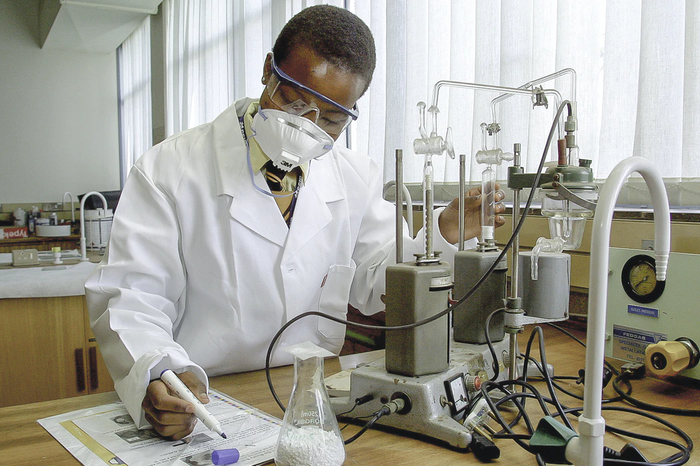Disadvantaged children in lower-income countries face ‘continual’ educational barriers, Cambridge study finds
A study undertaken by Cambridge researchers analysing students in lower- and middle-income countries found that poorer children are less likely to enter higher education compared to their wealthier counterparts

Disadvantaged children are being denied access to higher education in lower- and middle-income countries, a study undertaken by the Research in Equitable Access and Learning (REAL) Centre at the Faculty of Education has found.
The research was reported in the British Education Research Journal, and used data from Young Lives, an international childhood poverty study tracking two cohorts of young people in Ethiopia, India, Peru and Vietnam at ages eight, 12, 15, 19 and 22. The study focused on around 3,500 young people born in 1994/5.
The study shows that “promising but poorer students ‘fall back’ during their school years, as challenges associated with their socio-economic circumstances gradually erode their potential.” The researchers describe their findings as a reflection of the “protective effect” of wealth in the system of academic advantage.
The researchers compared basic entry rates into higher education among the poorest 25% and wealthiest 25% of participants, and found that the percentage point gap between these quartiles was 45 in both India and Peru, 41 in Vietnam, and 17 in Ethiopia.
Lead author Dr Sonia Ilie and her team then analysed higher education progression rates amongst demographically comparable groups of students, focusing on characteristics such as gender, ethnicity and rural or urban settings. They then added more information on their education to analyse students aged eight, 12 and 15 who were in school and reaching certain attainment levels.
As each demographic was added, the gap between the poorest and richest students’ likelihood of entering higher education narrowed. This indicated that children from poor backgrounds often do not progress to higher education because they under-achieve or drop out during primary and secondary school.
The researchers also suggest that this disparity in the “raw” wealth gap indicates that factors such as gender interact with the student’s socio-economic status and influence their likelihood of progression to higher education.
A gap also existed between students who finished secondary school at similar levels of learning. The size of this gap was indicative of the protective effect of wealth present even at the same level of schooling and learning.
“Even among children who do well to begin with, poverty clearly becomes an obstacle to progression,” Ilie said. “The reverse also applies: if they are wealthy, even children with initially lower levels of learning catch up with their poorest peers. This is what we mean by the protective effect of wealth.”
The researchers also studied the progress of “high-promise” children by identifying all children who had reached a certain level of literacy by age eight and using numeracy and maths scores to track the educational trajectories of the richest and poorest students within the group. The study found that the attainment gap of students within the top and bottom wealth quartiles widened.
Many more “high-promise” children from the richest quartile entered higher education in comparison to the poorest. The percentage point gap between the two quartiles was 39 in Peru, 32 in India and Vietnam, and 15 in Ethiopia. The wealthiest children were much more likely to enter all forms of tertiary education, including university, technical colleges and teacher training.
“In many lower-income countries, low socio-economic status is a continual barrier to young people’s attainment,” Ilie said. “What is clear is that these inequalities in higher education access have nothing to do with ability: this is about systems which are consistently failing poorer children.”
Discussing the findings of the study with Varsity, the International Students’ Campaign (ISC) said: “The most important part that universities can have in helping address the disparities in access to higher education (HE) include changing any perspective of HE being impossible for someone of a certain socioeconomic status (SES).”
“A few ways universities could do this include providing means-tested grants, highlighting academically accomplished students from lower SES to encourage others to consider HE and increasing access schemes and mentoring opportunities targeted at students from lower SES.”
The study also discusses how to address the higher education wealth gap, stating that the first priority should be targeted investment in primary education for the very poorest.
This investment is currently an emerging policy focus in many lower-income countries, where disadvantaged children often still have poor learning outcomes despite going to school, due to limited educational resources and support at home and school attendance difficulties.
The study also shows that targeted support should continue in secondary education where wealth-related educational disparities continue. The researchers’ analysis of the residual wealth gap between richer and poorer students who finish secondary school reflects the need for initiatives to reduce the cost of higher education for socio-economically disadvantaged students, with the possibility of means-tested grants.
Taxation-based funding for higher education “taxes those who are very unlikely to benefit from HE to subsidise a socio‐economic elite who themselves gain a great deal of personal economic benefit from their HE”, the study states. While charging tuition fees is a potential solution, the study warns that this will also create a barrier for low-income students.
“The first policy implication from this work is therefore that increasing investment in primary schooling for the poorest students remains a priority,” the study states. “Only if we can increase the learning of the poorest students in the earlier years of their schooling is it likely that they will have sufficient attainment to progress on to HE.”
“If we want to equalise opportunities at the point of entry into higher education, we have to intervene early, when the wealth gaps emerge,” Professor Pauline Rose, Director of the REAL Centre, said. “This study shows that targeted and sustained interventions and funding are needed for the poorest students not only in their earliest years, but throughout their educational careers.”
 News / Clare Hall spent over £500k opposing busway 24 December 2025
News / Clare Hall spent over £500k opposing busway 24 December 2025 Comment / The ‘class’ of Cambridge24 December 2025
Comment / The ‘class’ of Cambridge24 December 2025 News / Caius mourns its tree-mendous loss23 December 2025
News / Caius mourns its tree-mendous loss23 December 2025 News / Girton JCR publishes open letter expressing solidarity with Palestine25 December 2025
News / Girton JCR publishes open letter expressing solidarity with Palestine25 December 2025 Comment / Yes, I’m brown – but I have more important things to say22 December 2025
Comment / Yes, I’m brown – but I have more important things to say22 December 2025











